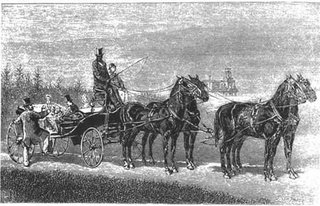There is a small, tightly knit cohort within the community driven by
Kent’s Imperative
- the principal of the continuing pursuit of professionalization in the art and science of intelligence. (
ed. - For which this blog is named). Many seek this goal without knowing or realizing this is what they are working towards.
But overall, it often seems these individuals are few and far between. And those that have the vision to see beyond the daily grind of product and politics, those that have a passion beyond the mere reckoning of a paycheck or promotion, are all too often spurned within their own organizations until they are ground down, undistinguishable from any other government drone or corporate wage slave.
One of the most serious challenges those that are driven by Kent’s Imperative face is one of communication. It is extremely difficult, to say nothing of frustrating, to convey the insights and experiences developed in the pursuit of professionalization in an environment bound tightly by the restrictions of security, political correctness, and rank. The first is a burden we have signed onto willingly, and most among us not only accept but actively support such protections given the full and terrible knowledge of the historical reasons they have evolved – and especially the consequences of failures of security during wartime. The other factors are among the walls against which we beat our heads until they are bloody and broken.
But we find ourselves often at a loss to describe even the elements of those basic factors, and a hundred others besides, which daily impact our life and work within and outside the walls and gardens. Many times, this is because we take for granted that the person on the other side of the table during that conversation has at least a passing acquaintance with the events, policies, or structures under discussion. All too often we are finding that this is not the case.
Your authors, and those like us, are part of a highly mobile cohort who have never had the luxury of the belief in the comforting lie of the company man. We change shops with an almost disconcerting regularity, and pursue new assignments and new missions in which the first priority is to accomplish that which has never been done before. It is almost entrepreneurial for our class, however almost universally we eschew the base concerns of the mere merchant in order to seek more rarified atmospheres in an almost Confucian ideal (often to our personal loss, and occasional regret….). If any among us were to articulate a possible end state goal, it would be to have the right ideas noticed at the right time in order to produce a lasting and needed change to better serve the mission.
In this, we are finding that we are different from our counterparts, who while they may still serve honorably, lack the ability to stand above the fight and see beyond the next thrust or parry. We are beginning to suspect that part of that difference may lie in the very nature of the skillset we have been forced to evolve, since our earliest days in this profession, in order to succeed in rapidly changing environments against dynamic backdrops of new targets, emerging accounts, organizational shifts, and the siesmic forces now wracking the community. For us, the ground is never certain, and the networking among our peers, the almost paranoid levels of situational awareness, and the constant scanning of horizons both geographic and professional is a byproduct.
This cohort has a high degree of shared experiences and reference points; but we find that they are not often even recognized by others in the community, let alone the outsiders of the academics or other support staff. Those newly initiated into the profession often fall quickly into a sorting – the highly connected and highly driven whose “fire in the belly” burns so bright you can see it in their eyes; or those that drift naturally and as quickly as possible into administrative functions, lives organized by rote and schedules dictated by lunchtime, quitting time, and vacation.
One of the key difficulties, we think, that this cohort has in the past had in communicating has been the lack of awareness of how limited the numbers of likeminded individuals really are within the community. Social network and virtual worlds researchers refer to the concept of “experiential epiphanies” – those insights which take many theses volumes to describe in academic contexts but are immediately apparent to those who live through them, to the point of that they quickly pass from articulated knowledge into the very mental outlook of the individual and the common cultural atmosphere of the group.
These experiential epiphanies help explain not only the communication gap, but the very real disconnect between the line and management, between the field and headquarters (no matter what the organization or agency), and between the working professionals and the academics. The latter simply lack the experiences – no matter what their previous backgrounds, no matter how smart they may be – to begin to understand the issues the former must tackle every day. It is in this gap that many of the misguided and universally hated decisions are found that drive the best from service
We set this realization forth for initial consideration, for now. The implications bear some deep reflection and further discussion.







